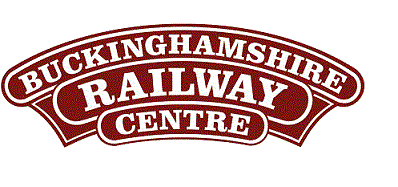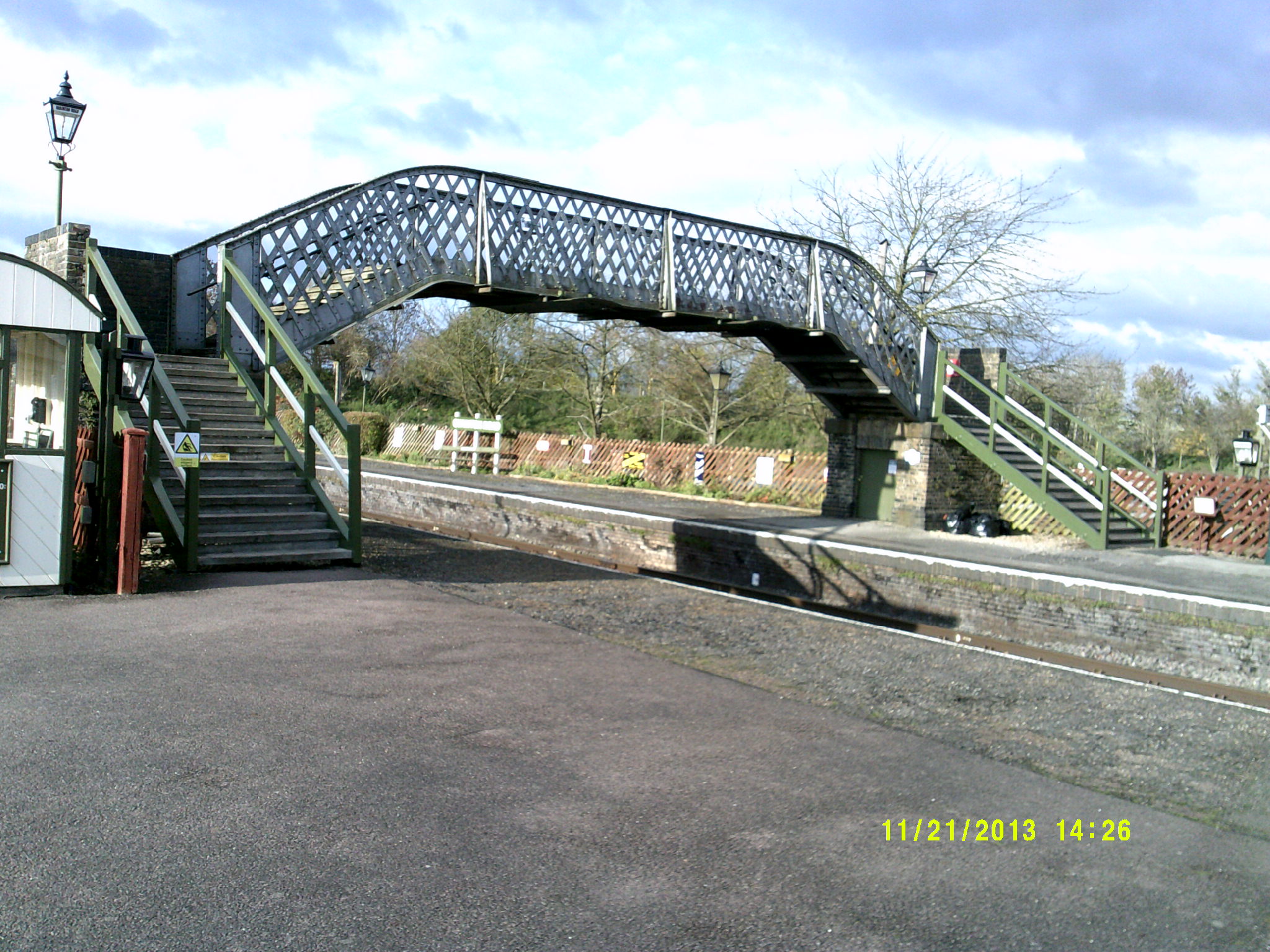
BRC Website Home
Quainton Virtual Stockbook - Railway Plant, Structures and Buildings
Pedestrian Footbridge

BRC Website Home
Quainton Virtual Stockbook - Railway Plant, Structures and Buildings
Pedestrian Footbridge


Photos: |
|
This was erected around 1898 and is of the same style as other Metropolitan Railway station footbridges, although, unlike the surviving others, it never had a protective roof. It is constructed of blue and yellow brick piers with substantial stone corners to support the steel decking. A lattice work bridge supports the steel decking. A lattice work bridge supports the decking. Electric lighting was installed on a post at each end, probably during World War II, as it would be a route between the Up Yard petrol dump and the Buffer Depot. In 1979 concern was expressed about the structural integrity of the bridge, and in June 1979 British Railways installed a supporting tower to reduce the span of the bridge. In addition strongbacks were bolted in position under the steps from the brick piers to the central horizontal section. This was only intended to be a temporary solution. A new base girder was installed in 1980 during the national steel strike using volunteers. The design work for the bridge repair was completed by Quainton Engineers, and approved by British Rail. Work commenced on the 19th January 1980. The day was spent removing some timbers of the decking for the crane slings and breaking out the concrete around the ends of the steelwork to gain access to the fixing bolts. A team of members also disconnected the electrical and telephone cables crossing the footbridge, and prepared the trestles which were to support the bridge on Platform 2 /3 during its repair. A British Rail Engineer and Flagman arrived at 8am the next day and gave us possession of the British Rail line. Sleepers were laid up to and between the rails to provide access for the crane which drove up to the bridge between the two platforms. Once in position, slings were attached and each end lifted free carefully before the whole bridge was transferred to the platform adjacent to the Brill Platform Hut. British Rail's temporary trestle support was lifted onto the Up Platform and dismantled with a little help from the crane, which then drove back into the down yard. The track was cleared and possession handed back to British rail by 1.30pm. Work started immediately, with all decking removed and some of the rivets burnt out. Having removed the bridge from the abutments, the intention was to suspend it from two temporary gantries, leaving the base of the bridge hanging in mid-air. This was to enable the whole of the rotten substructure and end plates to be cut away from the basically sound lattice work. The lattice work sides, after cleaning, were to be lowered and then riveted onto a new substructure fashioned from two 45 foot beams supplied by an outside contractor. The whole task was to be completed within twelve weekends. Work started enthusiastically with the rivets easily removed, but progress then slowed as the number of welded patches and plates became apparent. These legacies of British Rail repair work meant that it took seven weekends to cut away the substructure, and it was not until 8th March that the last of the old beams was finally removed. It had already been realised that, at the rate of progress, the 30th March deadline would not be met, so a number of members agreed to work a full week on the bridge. The Monday of the work week saw an early start on lining up of the two new beams parallel and level to one another prior to the welding on of the cross ties. This work, together with the grinding clean if the lattice, was completed on the Wednesday morning. A crane was hurriedly hired to lower the lattice work into place that same afternoon. Unfortunately, this happened to be the wettest day of the whole week and one poor benighted soul had to stand 15 feet in the air directing the crane, whilst the others stood in the shelter of the Brill Platform building. The next two days were mainly spent drilling some of the 600 holes necessary, but a start was made on the riveting. The Society's new rivet hammer was only obtained the previous day, after a lot of unravelling red tape and after phone calls as far afield as Truro and Aberdeen. Drilling and riveting continued for the next two weekends and the last rivet was finally fitted on Saturday 29th March 1980, even as the timber decking was being laid. These two weekends also saw new sections of angle being pieced-in where the existing material had rotted away, and the fitting of four out of six new bracing angles. At this stage the smoke deflectors were also refitted, with new brackets welded on to the main beams. The rebuilt bridge was lifted back into place with the crane standing on the British Rail track, as before. It was bolted into place and the British Rail Inspectors declared themselves extremely satisfied with the completed repair. The remaining work of fitting the steps and finishing the painting was completed on Good Friday 1980. The project involved over 1,000 man-hours, compressed into relatively few days of 10 - 14 hours work, and cost the Society approximately £5,000. Against this is should be considered that commercially it would have cost £15,000 - £16,000. Just before all this work, a music video for The Tourists was made, this featured a large number of extras dancing on the footbridge, that was due for removal and refurbishment shortly afterward. References: |
| Origin :- | Great Central and Met Joint | Date Built :- | 1898 | Number :- | N/A |
| Type :- | Footbridge | Builder :- | ????? | Owner | QRS |
| Status :- | Operational | Location :- | Platform 1 / 2 |
Text © Quainton Railway Society / Photographs © Quainton Railway Society or referenced photographer
Email Webmaster
Page Updated: 15 October 2017